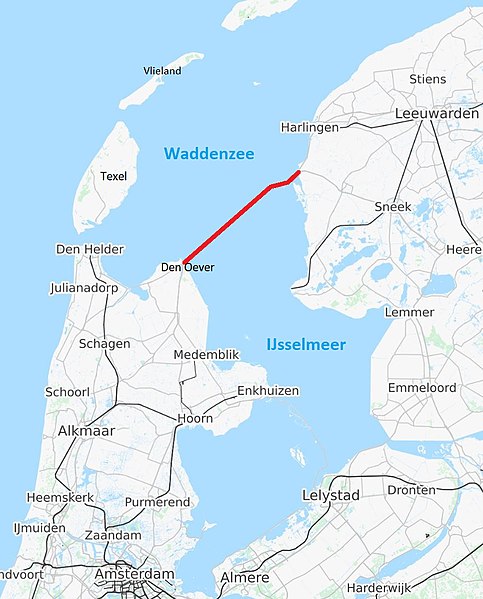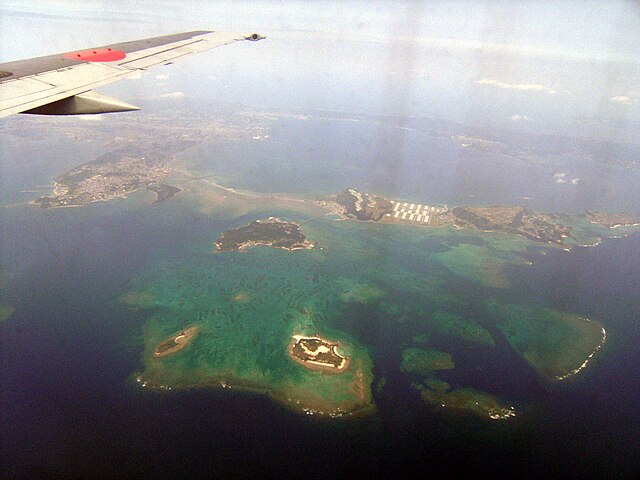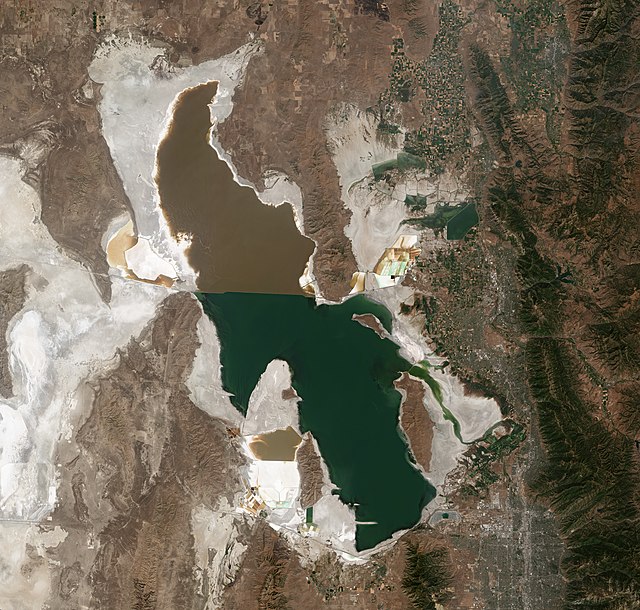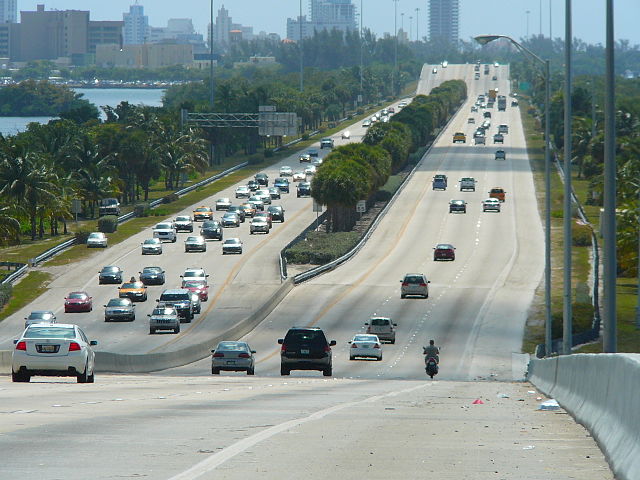The Afsluitdijk is a major dam and causeway in the Netherlands. It was constructed between 1927 and 1932 and runs from Den Oever in North Holland province to the village of Zurich in Friesland province, over a length of 32 kilometres (20 mi) and a width of 90 metres (300 ft), at an initial height above Amsterdam Ordnance Datum of between 6.7 metres (22 ft) along the section at Friesland, and 7.4 metres (24 ft) where it crosses the deep channel of the Vlieter. The height at the greater sea depths west of Friesland was required to be a minimum of 7 metres everywhere when originally constructed.
Afsluitdijk in red
Afsluitdijk with the Wadden Sea (a part of the North Sea) on the left and the IJsselmeer on the right
Image from satellite
Closing the last gap 'De Vlieter' in 1932
A causeway is a track, road or railway on the upper point of an embankment across "a low, or wet place, or piece of water". It can be constructed of earth, masonry, wood, or concrete. One of the earliest known wooden causeways is the Sweet Track in the Somerset Levels, England, which dates from the Neolithic age. Timber causeways may also be described as both boardwalks and bridges.
The Hindenburgdamm Rail Causeway across the Wadden Sea to the island of Sylt in Schleswig-Holstein, Germany
Kaichu Doro in Uruma, Okinawa-Honto, the main island of the Ryukyu Islands in Japan.
Satellite photo of the Great Salt Lake from August 2018 showing a major color difference between the northern and southern portions of the lake as a result of a mineral imbalance caused by a railroad causeway.
The Julia Tuttle Causeway, one of the major arteries connecting Miami and Miami Beach in Florida








